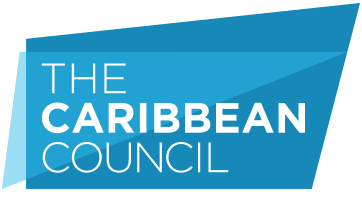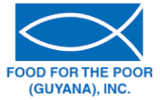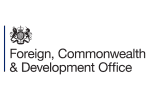image: @VincieRichie/twitter
After decades of inactivity, St Vincent’s La Soufriere volcano erupted on 9 April casting huge clouds of ash up to six miles into the sky causing government to implement plans to evacuate thousands of citizens living in its vicinity.
In the days following the eruption St Vincent’s government implemented plans to evacuate thousands of its citizens from the north of the island, with initial forecasts suggesting that some 20,000 or more of the country’s 100,000 people may be displaced for at least four months.
Following weeks of related seismic activity, the St Vincent Government issued on 8 April an immediate evacuation order instructing all citizens in a designated northeast and northwest exclusion zone to be evacuated to safe areas on the Windward side of the island from North Union to Kingstown and on the Leeward side from Barouallie.
Shortly afterwards, it was decided to accept an offer by cruise lines including Royal Caribbean and Carnival to transport evacuees to countries in the region that had offered temporary support including St Lucia, Grenada, Barbados, Antigua, Trinidad, Guyana and St Kitts. In addition to immediate relief support being provided from Trinidad and Barbados, Venezuela sent a naval vessel with 20 tonnes of supplies and trained emergency medical personnel.
The University of the West Indies’ Seismic Research Center said that it expected explosions and accompanying ash fall of similar or larger magnitude to continue to occur for days impacting St Vincent and neighbouring islands. Both the response and evacuation effort have been complicated by the Covid pandemic with all those being taken to shelters in the south of the island or boarded on cruise ships having to be tested.
The eruption and subsequent explosions which resulted in a new crater being created, is expected to cause significant economic damage to the island’s tourism and agriculture dependent economy which was already suffering from the pandemic.
Speaking following the eruption the Deputy Prime Minister, Montgomery Daniel, said that the agriculture sector was now non-existent on the eastern side of the volcano.
Daniel who visited the area on 11 April said that the area had been devastated. “The primary forest area close to the La Soufriere volcano is all gone,” he said. “The farms are basically gone. The tree crops have been denuded …. Breadfruit, coconuts, mangoes, soursop, all of those tree crops are basically gone. Things such as plantains and bananas, all of those are gone”. He also said that the ash fall on the country’s soon to be harvested arrowroot crop was deep, and had levelled all farm “so that all [ground crops] have been lost and not a single blade of grass can be seen on these farms”. “There is not going to be very much food available from that area for quite a long time”, the minister added.
Since the volcano erupted a complex evacuation and rescue mission has been underway as further volcanic events have triggered pyroclastic flows, causing power and water outages in some areas of St Vincent. In addition, ash clouds have begun to affect parts of the Eastern Caribbean reducing air quality and causing flight cancelations and airport closures.
In a statement the Caribbean Development Bank (CDB) said that it was actively coordinating a multitiered response to support the island’s immediate, medium and longer-term needs. CDB indicated that following a first-tier response involving support by the Caribbean Disaster Emergency Management Agency (CDEMA), it would provide funds to assist with urgent needs at a national level in response to requests for immediate support.
“CDB is also now in dialogue with development partner organisations and the international donor community to pool resources and harmonize efforts for a more impactful long-term outcome”, the statement noted.
Prior to the volcanic eruption, the Caribbean Media Corporation reported Prime Minister Ralph Gonsalves as saying that due to falling government revenues because of the pandemic, Government was only a matter of months away from not being able to pay civil servants salaries and pensions.
He had also expressed concern about the reluctance of some workers to be vaccinated or undergo regular testing to enable tourism to return. He said that his concern was that St Vincent would not then be designated a ‘green’ destination under the traffic light system the UK and some other key marketsare expected to introduce, and Virgin Atlantic would not begin its scheduled service to the island beginning in June.
In related developments, the West and North of Barbados have been hard hit by the falling ash and Grantley Adams International Airport was temporarily closed. Grenada and St Lucia are also experiencing ash fall, darker skies, and poorer air quality as the ash cloud spreads.
Jamaica’s Tourism Minister, Edmund Bartlett, subsequently chaired a tourism summit with Prime Minister Gonsalves and global tourism partners to discuss recovery efforts for the island. The meeting is to result in a strategic recovery plan for tourism. In a release Bartlett noted that the participation of global tourism leaders would be critical in providing a platform to generate support for St Vincent. He said that the volcanic eruption would set back the recovery of the tourism and travel sector in the island and other peripherally affected countries including heavily tourism-dependent Barbados. The meeting included several members of the World Travel and Tourism Council (WTTC), the OAS, regional Ministers of Tourism and over 150 tourism stakeholders.
This is a lead article from Caribbean Insight, The Caribbean Council’s flagship fortnightly publication. From The Bahamas to French Guiana, each edition consists of country-by-country analysis of the leading news stories of consequence, distilling business and political developments across the Caribbean into a single must-read publication. Please follow the links on the right-hand side of this page to subscribe, or access a free trial.





